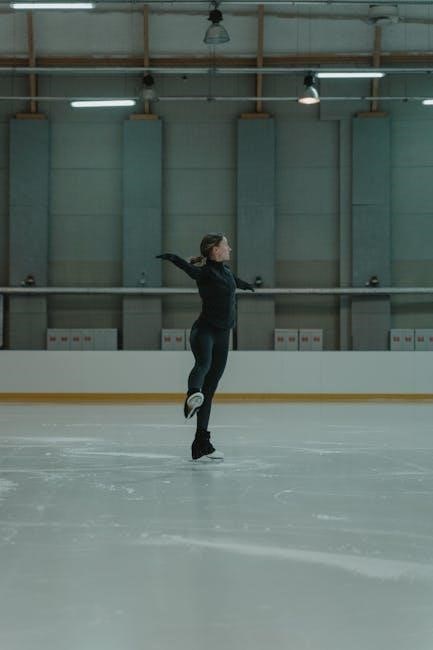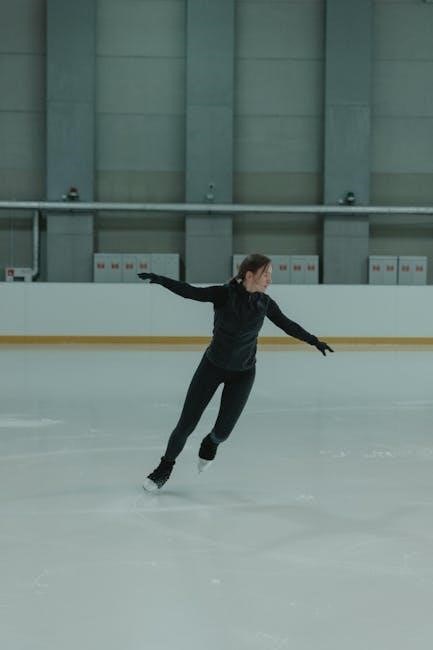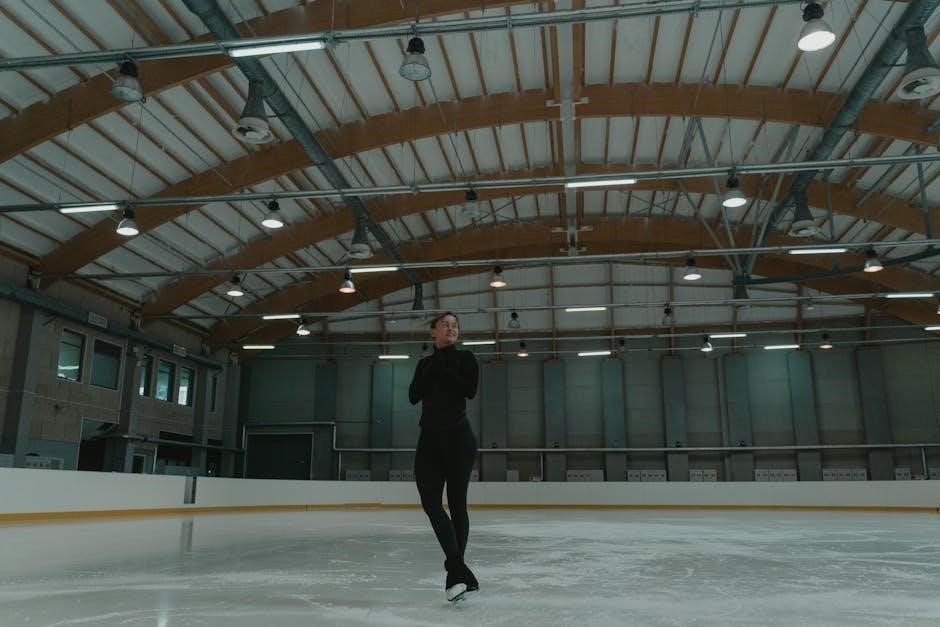Pes Anserine Bursitis is an inflammatory condition affecting the bursa near the hamstring tendons at the inner knee.
It causes pain and swelling, often linked to repetitive motion, obesity, or athletic activities, impacting daily movements and exercise routines.
1;1 Definition and Causes
Pes Anserine Bursitis, or Pes Anserinus Syndrome, is inflammation of the bursa located beneath the tendons of the sartorius, gracilis, and semitendinosus muscles near the knee. This condition often results from repetitive knee flexion, tight hamstrings, obesity, or sports involving running and cycling. It is more common in women and middle-aged individuals, causing inner knee pain that worsens with activities like climbing stairs or prolonged sitting.
1.2 Symptoms and Diagnosis
Common symptoms include pain on the inner side of the knee, tenderness, and swelling near the pes anserine bursa. Activities like climbing stairs or prolonged sitting often worsen the pain. Diagnosis involves a physical exam to check for tenderness and swelling. Imaging tests, such as MRI or ultrasound, may confirm the diagnosis and rule out other conditions. Early detection is key for effective treatment and recovery.

Importance of Exercises in Treatment
Exercises play a crucial role in reducing pain and inflammation, improving mobility, and strengthening muscles around the knee, which supports recovery from pes anserine bursitis effectively.
2.1 Role of Stretching and Strengthening
Stretching improves flexibility and reduces tension in the hamstrings and quadriceps, alleviating pressure on the pes anserine bursa. Strengthening exercises, such as weighted squats and step-ups, enhance muscle support around the knee, promoting stability and reducing inflammation. This combination helps restore proper movement and prevents recurrence, making exercises essential for long-term recovery and maintaining knee health. Regular practice ensures the muscles around the knee remain balanced and strong, which is crucial for overall joint function and mobility.
2.2 Preventing Further Inflammation
Preventing further inflammation involves a combination of rest, ice therapy, and anti-inflammatory medications. Gentle exercises, such as hamstring stretches and quadriceps strengthening, help maintain muscle balance without overloading the bursa. Proper warm-up routines and maintaining a healthy weight also reduce strain on the knee. Consistent adherence to these measures minimizes the risk of flare-ups, promoting a faster and more sustainable recovery from pes anserine bursitis.

Initial Exercises for Pes Anserine Bursitis

Initial exercises focus on gentle stretches to relieve tension and improve mobility, such as hamstring stretches on a wall, quadriceps stretches behind a chair, and seated knee extensions.
3.1 Hamstring Stretch on Wall
Lie on your back with your buttocks close to a doorway and legs extended straight. Raise one leg toward the ceiling, keeping the knee straight, until a gentle stretch is felt in the hamstring. Hold for 20-30 seconds and repeat 2-3 times on each side. This stretch targets the hamstring muscles, relieving tension and improving flexibility without putting excessive strain on the knee or bursa.
3.2 Quadriceps Stretch Standing Behind a Chair
Stand behind a sturdy chair for support and hold onto it for balance. Bend one leg backward, grasping your ankle with your hand, and gently pull your heel toward your buttocks. Maintain a straight knee and hold for 20-30 seconds. Repeat 2-3 times on each side. This stretch targets the quadriceps and hip flexors, enhancing knee mobility and reducing tightness that may contribute to bursitis discomfort. Ensure the movement is smooth and pain-free.
3.3 Seated Knee Extension Stretch
Sit straight in a chair with your legs extended in front of you. Slowly lift one leg, keeping your knee straight, until you feel a gentle stretch in the back of your knee. Hold for 20-30 seconds, then lower your leg. Repeat 2-3 times on each side. This stretch improves knee extension and reduces stiffness, aiding in the recovery from Pes Anserine Bursitis. Ensure proper posture and avoid bouncing to prevent further irritation.
Advanced Strengthening Exercises
Advanced strengthening exercises, such as weighted squats and step-ups, target the muscles around the knee, improving stability and reducing inflammation in Pes Anserine Bursitis.
4.1 Weighted Squats
Weighted squats are an effective advanced exercise for strengthening the muscles around the knee, particularly the quadriceps and hamstrings. To perform, stand with feet hip-width apart, holding a weight across your shoulders or close to your chest. Engage your core, then lower your body into a controlled squat, keeping your back straight and knees aligned with your toes. Rise slowly to the starting position. This exercise improves joint stability and reduces inflammation. Progress gradually by increasing weight or repetitions, ensuring proper form to avoid strain.
4.2 Step-Ups
Step-ups are an advanced strengthening exercise targeting the quadriceps, hamstrings, and hip muscles. Stand in front of a sturdy step or platform, approximately 6-8 inches high. Step up with one leg, bringing the other to meet it, then step down carefully. Perform 3 sets of 10-12 repetitions on each leg. This exercise enhances knee stability, strength, and range of motion, reducing pes anserine bursitis symptoms. Focus on proper form to avoid strain and progress gradually as comfort allows.
4.4 Straight Leg Raises
Straight Leg Raises strengthen the quadriceps and hip flexors without bending the knee, making them ideal for knee stability. Lie on your back, tighten the thigh muscles of one leg, and lift it 12-18 inches, keeping it straight. Hold for 5 seconds, then slowly lower. Perform 3 sets of 12-15 repetitions on each leg. This exercise improves knee extension strength and reduces pes anserine bursitis discomfort. Focus on controlled movements and progress gradually to avoid strain.
Preventative Measures
Maintaining muscular balance, warming up before exercise, and ensuring proper posture and alignment are key to preventing pes anserine bursitis recurrence and promoting long-term knee health.
5.1 Maintaining Muscular Balance
Maintaining muscular balance around the knee is crucial to prevent pes anserine bursitis. Strengthening the hamstrings, quadriceps, and hip muscles helps reduce stress on the bursa. Weak or tight muscles can lead to improper movement patterns, increasing inflammation risk. Incorporating exercises like weighted squats, step-ups, and straight leg raises can enhance strength and stability, promoting a balanced musculature that supports the knee joint and minimizes strain on the pes anserine bursa.
5.2 Warming Up Before Exercise
A proper warm-up is essential to prevent pes anserine bursitis flare-ups. Begin with light cardio, such as walking or cycling, to increase blood flow. Focus on dynamic stretches targeting the hamstrings, quadriceps, and hip muscles. Gentle movements like leg swings, lunges, and knee lifts can prepare the tissues for activity. This routine reduces muscle stiffness, enhances flexibility, and lowers the risk of inflammation, ensuring a safer transition into more intense exercises and protecting the bursa from strain.
5.3 Proper Posture and Alignment
Maintaining proper posture and alignment is crucial for managing pes anserine bursitis. Poor alignment during daily activities or exercises can increase stress on the knee joint and bursa. Stand or sit with feet hip-width apart, keeping weight evenly distributed. During exercises like squats or lunges, ensure knees align over toes to avoid excessive strain. Strengthening core muscles can improve stability and promote proper movement patterns, reducing the risk of inflammation and supporting long-term recovery.

Creating a Workout Plan
A structured workout plan is essential for managing Pes Anserine Bursitis, ensuring gradual progression and avoiding overexertion. Tailor exercises to individual needs and abilities.
6.1 Timeline for Weeks 1-4
Weeks 1-4 focus on gradual progression, starting with gentle stretches and strengthening exercises. Weeks 1-2 emphasize foundational stretches like hamstring and quadriceps stretches, 2-3 sets daily. By Week 3, introduce strengthening exercises such as straight leg raises, maintaining low intensity. Week 4 increases difficulty, ensuring pain-free progression. Consistency is key, with exercises performed 5-7 times weekly. Consult a healthcare professional to tailor the plan and monitor progress, ensuring a safe and effective recovery journey.
6.2 Incorporating Aerobic and Stability Exercises
Incorporating aerobic and stability exercises enhances recovery by improving circulation and strengthening the knee. Low-impact activities like cycling or swimming are ideal for maintaining fitness without strain. Stability exercises, such as single-leg stands or balance boards, improve joint stability and prevent further inflammation. These exercises should be introduced gradually, starting with short sessions and increasing duration as comfort allows. Combining aerobic and stability work promotes overall knee function and supports long-term recovery, reducing the risk of recurrence and enhancing mobility.

Additional Tips for Recovery
Use ice packs to reduce inflammation and alleviate pain. Compression bandages can help minimize swelling. Anti-inflammatory medications may be prescribed to manage symptoms effectively during recovery.
7.1 Use of Ice and Compression
Applying ice packs to the affected area reduces inflammation and alleviates pain. Use ice for 15-20 minutes several times daily. Compression bandages help minimize swelling and provide support. Ensure the bandage is snug but not overly tight to avoid restricting blood flow. Elevating the leg above heart level while icing enhances blood flow and accelerates healing. Repeat this process consistently to manage symptoms effectively and promote recovery. Always combine ice therapy with rest and proper elevation for optimal results.
7.2 Anti-Inflammatory Medication
Anti-inflammatory medications, such as NSAIDs (e.g., ibuprofen or naproxen), are effective in reducing pain and swelling associated with Pes Anserine Bursitis. These medications can be taken orally as directed by a healthcare provider to alleviate symptoms. However, prolonged use should be avoided due to potential side effects. Always follow the recommended dosage and consult a doctor before starting or continuing medication. This approach is often combined with rest and physical therapy for optimal recovery and pain management.

7.3 Monitoring Progress
Regularly monitoring progress is crucial for managing Pes Anserine Bursitis. Track improvements in pain levels, swelling reduction, and enhanced mobility. Use a pain scale to document daily changes and assess functional abilities, such as walking or climbing stairs without discomfort. Adjust treatment plans based on progress and consult a healthcare professional if symptoms persist or worsen. Keeping a recovery journal can help identify patterns and ensure adherence to prescribed exercises and therapies, promoting a steady return to normal activity levels and overall well-being.

Accessing Exercise Guides
Downloadable PDF resources and illustrated guides provide detailed instructions for Pes Anserine Bursitis exercises, available on reputable health websites like healthzonemd.com.
8.1 Downloadable PDF Resources
Downloadable PDF guides provide comprehensive exercise plans for managing Pes Anserine Bursitis, offering detailed instructions and timelines for weeks 1-4.
These resources, available on websites like healthzonemd.com, include stretching, strengthening, and stability exercises with illustrations for clarity.
PDFs often cover causes, symptoms, and prevention strategies, ensuring a holistic approach to recovery and long-term knee health.
8.2 Illustrated Exercise Instructions
Illustrated guides provide clear visual instructions for Pes Anserine Bursitis exercises, ensuring proper form and technique.
These resources often include step-by-step images for stretches like hamstring and quadriceps exercises, as well as strengthening routines such as weighted squats and step-ups.
The visuals help users understand how to perform each movement safely and effectively, promoting recovery and preventing improper form that could worsen the condition.
Consistency in exercises and professional guidance are crucial for effectively managing Pes Anserine Bursitis, ensuring long-term recovery and preventing future inflammation.
9.1 Importance of Consistency

Consistency in performing prescribed exercises is vital for managing Pes Anserine Bursitis. Regular stretching and strengthening routines help reduce inflammation and improve knee function. Irregular adherence can hinder progress, leading to prolonged recovery and potential relapse. Maintaining a daily exercise regimen ensures sustained improvement and prevents future flare-ups, supporting long-term joint health and mobility.
9.2 Consulting a Healthcare Professional
Consulting a healthcare professional is essential for effectively managing Pes Anserine Bursitis. A physiotherapist or orthopedist can tailor exercises to individual needs, ensuring proper form and progression. They also monitor recovery, adjusting plans to prevent overexertion. Professional guidance helps address underlying issues, such as muscle imbalances, and provides personalized advice for long-term joint health. Regular follow-ups ensure sustained improvement and prevent recurrence, making expert consultation a cornerstone of successful treatment and rehabilitation.
